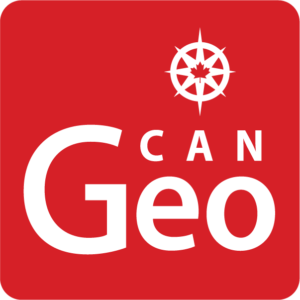When Julia Zarankin saw her first red-winged blackbird at the age of 35, she didn’t expect that it would change her life. What she never could have predicted was that she would become one of them. Not only would she come to identify proudly as a birder, but birding would ultimately lead her to find love, uncover a new language and lay down her roots. Field Notes from an Unintentional Birder tells the story of finding meaning in midlife through birds.
Read an excerpt below:
I had no trouble recognizing the group in the parking lot. Cargo pants tucked into socks and signature off-white multipocketed vests, which I recognized from the times I’d Googled “birdwatchers,” each of the half-dozen people huddled around their cars wore at least one item of bird-themed clothing, ranging from a subtle baseball cap with a woodpecker on it to a more boisterous sweatshirt featuring a giant red bird with black wings, so bright I wondered for a minute if the bird could be real. I looked around for the leader while I tried to make sense of their optics-talk; questions of magnification and the optical quality of Vortex versus Eagle Eye passed me by completely, but I understood enough to nod in appreciation when Lucy, a petite retired high school teacher, showed off her recently purchased high-end Swarovski binoculars. She later admitted, with a mischievous smile, that she’d bought them with money she had set aside for a sofa.
I knew the leader had arrived once a rusty Toyota pulled up, and everyone said, “There’s Brete.” A six-foot-tall high school math and science teacher, Brete wore sweatpants with a Norwegian knit sweater and a baseball cap with yet another bird on it; initially stern, his face lit up when he said, “I read a pretty good report this morning. Let’s head to Kipling Spit.”
Though the references to a report and to Kipling Spit, the name Brete still used to refer to Colonel Samuel Smith Park, were both lost on me, I introduced myself, reminded him of the e-mail I’d sent a few days earlier, and sheepishly admitted that I was a complete beginner.
“Not to worry—folks in our group have varying degrees of experience. I mean, there isn’t a single person here who can ID all the warblers.”
“Uh…a warbler?” I knew ducks and pigeons and owls existed, but what were warblers?
“Wow. You weren’t kidding when you said beginner.”
“Nope.”
“Do you have binoculars?”
I shook my head.
“That might be a good place to start,” said Brete with a chuckle, which I thought might be code for “Who is this interloper, how did she find me on the Internet and why on earth did I ever e-mail her back when she clearly said ‘she didn’t know a thing about birds?’”
Once we got into our respective cars, our cavalcade of birders thundered down the highway until we reached a park at the foot of Kipling Avenue, where the city meets Lake Ontario, and where, according to the report Brete had read on the OntBirds listserv, a western grebe had recently been seen. A kind gentleman named Benito, draped in a long-lensed camera and binoculars, and with a spotting scope casually resting on his shoulder, let me borrow his spare binoculars, which he alternately called his bins or binocs or glasses.
The binoculars were heavy around the neck.
As we walked out to the lake, people started shouting words that I couldn’t process: “Northern shoveler! Red-breasted merganser, American wigeon! Bufflehead, long-tailed duck!” The binoculars wobbled in my hands. High winds accosted me and when I tried to focus the lenses, my eyes watered; the second I glimpsed a duck, it dove and left me staring at the hyperactive early-April waves on Lake Ontario. “Wait, look,” Brete shouted, “I think I got it, horned grebe, horned grebe, over there, next to the pied-billed grebe, you can’t miss it, to the right of the dozens, no, hundreds of red-necked grebes out there, oh wait, oh my god, is that a western grebe? Are you seeing the grebes, Julia? It’s not every day you get four species in one place.”
My mind bobbed in and out of awareness amidst this sea of names. I nodded, but my binoculars were pointed at the CN Tower, the only thing I could safely identify on the horizon.
“What’s a grebe?”
“Start with the red-necked grebes. There are close to five hundred of them out there,” Brete replied. “Can’t miss them—gorgeous rust-coloured neck, and look at that elongated bill! It’s a textbook grebe, no doubt about it.”
I located the mass of waterfowl, but in the dull light couldn’t detect anything remotely rust-coloured, and all the bills looked identical to my untrained eye.
On our way back to the cars, my extremities frozen from standing still in gale-like winds, I wondered how many more hours of staring at dark blobs on the water I could withstand. Disenchanted, I was preparing my exit speech to the group, when we stopped near a bush and someone called out, “Red-winged blackbird.”
I almost didn’t look because the thought of lifting the binoculars to my eyes brought with it a slight wave of nausea. But the bird stood still, balancing on a cattail, and I managed the trifecta of raising the binoculars, focusing them and finding the desired object magnified in my field of vision.
“What is that?” I gasped, nearly blinded by the unexpected vermillion patches on the blackbird’s epaulets. I watched as the bird threw back its head, opened wide its beak and let out a sound so primal it left me marvelling: this was as close as I’d ever stand to dinosaurs. If this bird had been here all along, I thought, what else had I been missing?
Excerpted from Field Notes from an Unintentional Birder: A Memoir, by Julia Zarankin ©2020. Published by Douglas & McIntyre. Reprinted with permission of the publisher.





